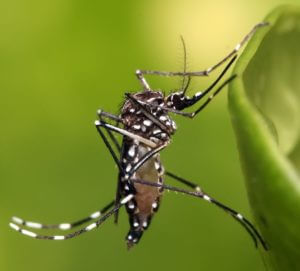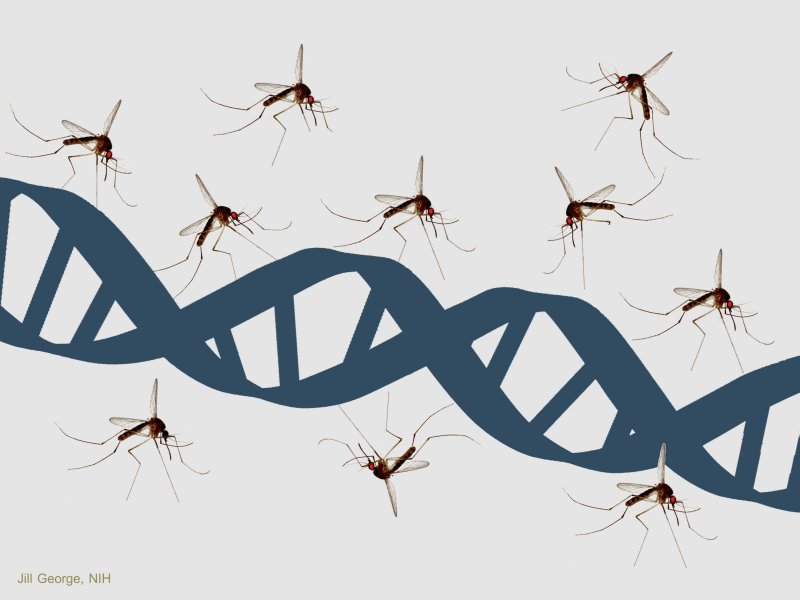In fall 2015, the biotech company Oxitec planned to release genetically engineered mosquitoes throughout the Florida Keys capable of stopping their wild relatives from spreading Zika, a dangerous virus that causes birth defects and damages the nervous system. These lab-bread insects carry a lethal gene that is only deactivated when the engineered mosquitoes are exposed to the antibiotic tetracycline. When they breed with their wild relatives, the mosquitoes pass this gene to their offspring. Because tetracycline isn’t available in nature, the offspring inevitably die when the gene is activated, which prevents them from transmitting Zika.
Oxitec’s researchers were confident the mosquitoes functioned as designed based on the results of field trials conducted in Brazil and the Cayman Islands. But in order to release their genetically engineered insects in the US, the company needs the EPA’s approval, which entails a 12-18 month review process and another field trial, the one planned for Florida. The company expects to receive approval from the EPA based on preliminary feedback from the agency.
But intense opposition from some local voters in 2016 raised concerns that Oxitec’s mosquito would have negative environmental impacts. A 2018 petition signed by over 200,000 Floridians aimed at stopping EPA approval amplified these concerns, warning about “the possible development of antibiotic resistance …. as result of this experiment.” The fact that the offspring of these engineered mosquitoes die makes the petitioners disaster scenario unlikely, experts say. Nonetheless, the controversy in Florida highlights a concern that has been at the center of the decades-old safety debate around biotechnology and how scientists are addressing it.

When researchers first confirmed they could genetically engineer plants and animals in the early 1970s, critics of the technology at the time expressed concerns about the risk of engineered organisms spreading their modified genes in the wild. Modern anti-GMO activists have picked up these fears and run with them. The anti-GMO website Sustainable Pulse, for example, complained in 2013 that the spread of GMOs “is out of control around the world”:
This is happening in regions and countries such as the USA and Canada, Middle America, Japan, China, Australia and Europe. In many cases, the plants have escaped far beyond the fields into the environment. In some regions, the transgenes have already moved into populations of wild relatives.
This phenomenon, known as “gene flow,” is uncommon and unlikely to cause serious ecological problems for a variety of reasons. Nonetheless, it does happen and scientists are working to prevent it. Unfortunately, critics of biotechnology have elevated an uncommon occurrence to an impending disaster without acknowledging the research aimed at preventing gene flow—and how far it’s progressed in recent years.
Genetic engineering solution
Researchers at the University of Minnesota (UMN) have begun developing a new technology that they think could circumvent the problem of gene flow entirely. The solution, still being tested, is called “synthetic incompatibility.” Like Oxitec’s approach, the technology is a form of genetic engineering that prevents modified organisms from reproducing with their wild relatives. But it may be a superior approach, the UMN team argues, “for the containment of transgenic organisms, and provide additional tools to disrupt disease vector populations ….”
The research team, headed by Michael Smanski, an assistant professor at the College of Biological Sciences at UMN, sat down with the GLP at the recent SynBioBeta synthetic biology conference in San Francisco to explain how synthetic incompatibility works and why it might solve the challenges posed by gene flow.
The UMN researchers were originally looking for ways to grow pharmaceutical drugs in genetically engineered crops without allowing foreign genes to escape into the environment, Smanski told the GLP:
We were aiming to engineer crop plants to produce medicines, and we knew we’d have a hard time getting [regulators] to approve these plants if there was any chance their genes could escape into the food supply. So we wanted to create a barrier between organisms that could normally sexually reproduce.

The technology could be used, for example, to breed hundreds of engineered varieties of corn, each optimized to make a different pharmaceutical compound. But these GMO crops wouldn’t be able to cross with each other—or any other plant for that matter.
Growing medicines in food crops is still at the experimental stage. But the team realized there was another application that could be commercialized much sooner. “Once we created the technology, we realized there was some really low-hanging fruit: applications in insect biocontrol,” Smanski said.
‘Synthetic incompatibility’, as it’s called, is driven by a set of molecular tools called “programmable transcriptional activators (PTAs),” proteins that can be designed to bind specific DNA sequences and turn on adjacent genes. To turn an engineered organism (like a mosquito) into a genetic biocontrol agent, the researchers would use a PTA to activate a lethal gene in wild disease-vector mosquitoes. Maciej Maselko, a postdoctoral scholar in Smanski’s lab, explained how a synthetic organism mating with its wild relative would trigger this lethal gene expression:
There’s two steps. In every organism, there are tightly regulated genes involved in embryonic development or controlling the cell cycle. First, we introduce a mutation into the promoter region of that gene [promoter sequences control where, when, and how much gene transcription occurs]. We then engineer [the mosquito] with the mutated promoter to express a programmable transcriptional activator that’s looking for the original promoter sequence. So in this synthetic species, there’s this activator that has nowhere to bind. But when this engineered organism crosses with the wild type organism that has the original sequence, the activator binds and drives lethal overexpression of that gene in the offspring.
Once this gene is activated, it either kills or makes the offspring sterile. “It’s up to us to determine how that happens and when that happens, depending on the particular application we’re looking at,” Maselko explained. Theoretically, the engineered organism would gradually eradicate the targeted disease as it continued mating with its wild relatives.

Commercializing the technology
The UMN team demonstrated a proof of concept using yeast and published the results in an October 2017 study in Nature Communications. They followed up with a modeling study in May 2018, which suggested their approach would actually work in Aedes aegypti, the mosquito that transmits yellow fever, dengue fever and Zika. The technology presents the prospect of eventually eradicating these diseases, according to Smanski:
There’s a technology called sterile insect technique (SIT), which is the only proven method for eliminating an invasive species from an entire continent. But it can’t be applied to all species because it involved irradiating every insect. Our technology is a way to hard wire SIT into every insect, and the male mosquitoes are then going to seek out the females where they live.
One of the biggest problems hindering insect control officials, Smanksi added, is that they can’t get to all the environments where mosquitoes breed. Aedes aegypti is a “container-inhabiting” mosquito, according to the entomology department at the University of Florida, “often breeding in unused flowerpots, spare tires, untreated swimming pools, and drainage ditches.” Spraying larvicide every place you might find a spare tire isn’t practical, so regulators are watching to see how this technology develops.
The UMN team says there’s more to do before synthetic incompatibility becomes a viable solution. Maselko:
There’s still some R&D hurdles we’ve got to overcome, like identifying the best way to engineer the technology in mosquitoes. We’ll do laboratory cage trials to see how it works. If those go well, we’ll move on to field trials. We’ve met with the managers of mosquito control districts in California, Florida and other parts of the southern US, and they’re hungry for this kind of technology.
The fact that local officials see the potential of synthetic incompatibility is an important step. But because the technology is a biopesticide (a living organism that kills plant pests and other insects), it will be regulated by the US Environmental Protection Agency. The agency approved the release of a similar “killer mosquito” in 20 US states in November 2017 to aid disease control efforts, so the UMN team thinks “the EPA could provide us with a very clear path to regulatory approval,” Smanski said.
However, the biggest challenge may not be winning over regulators—but the general public. “We could get all the approvals, but then we may be up against the public’s perception of the technology, and that could be a challenge,” said Siba Das, also a researcher in Smanski’s lab.
Getting the public on board
Anti-biotechnology and anti-GMO advocacy groups have proven adept at generating public fear over biotechnology. Indeed 50 percent of consumers say they would avoid foods labeled as “bioengineered” or made from GMO crops according to a June 2018 poll. But the activist-critics have not yet stopped the development of genetically engineered insects. While cautious, the scientific establishment believes that new technologies should be considered in countering pest and disease-carrying insect infestations.
The public also appears to have an open mind on this issue. A study published the same year suggested that most people are more accepting of genetic engineering when they can see the benefits of the technology for themselves. Nearly 80 percent of respondents in the study supported the use of engineered mosquitoes to control disease. Numbers like these encourage Smanski, who is optimistic about the public’s ability to spot and reject what he believes are scare scenarios propagated by ideological advocacy groups.
There’s a small, vocal minority who are going to be against any innovation, and a small minority for the innovation. But then the great majority sit in the middle, and they respond to reason. They realize that no technology is good or bad; applications of the technology can be good or bad and they are willing to be convinced by sound arguments.
Cameron J. English is the GLP’s senior agricultural genetics and special projects editor. He is a science writer and podcast host. BIO. Follow him on Twitter @camjenglish































